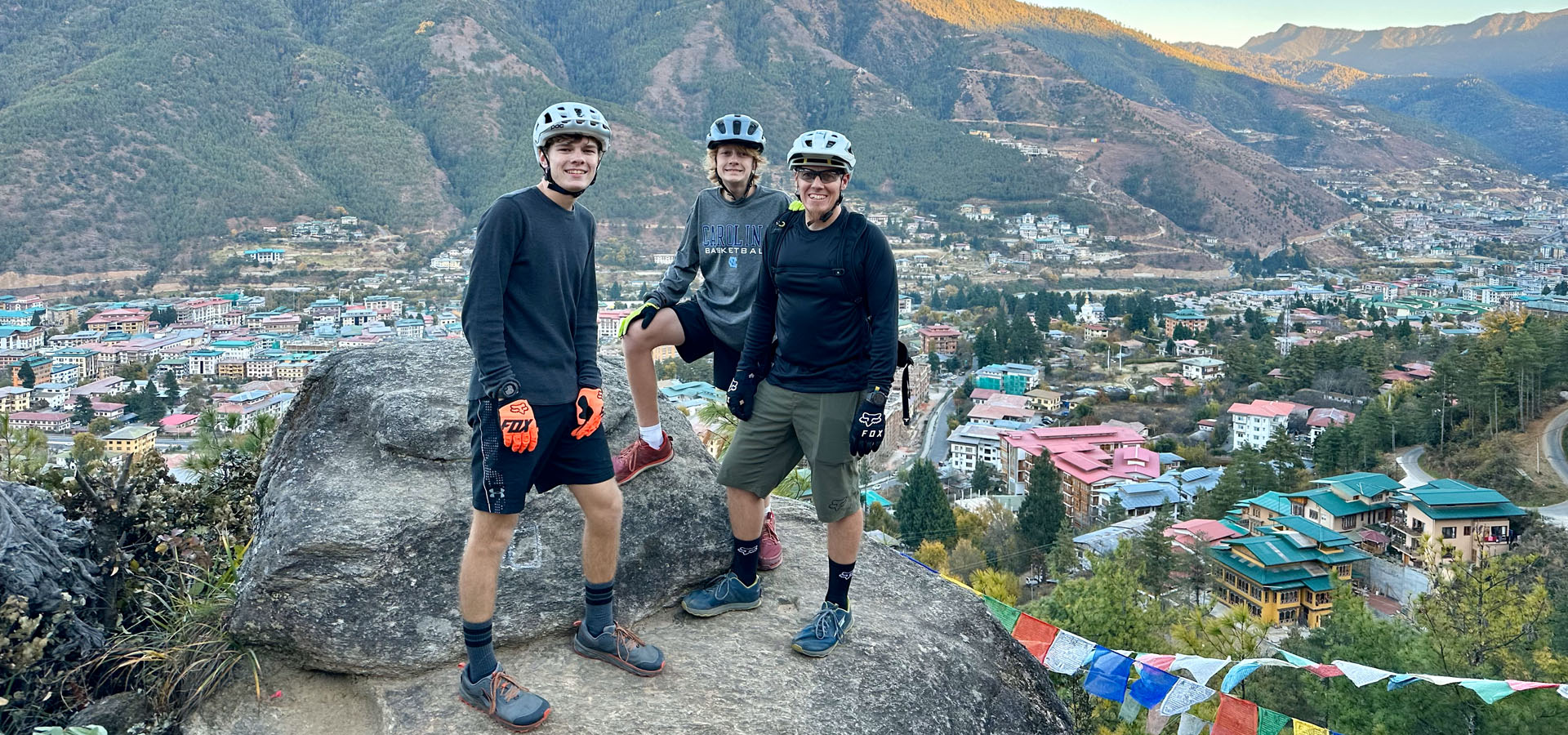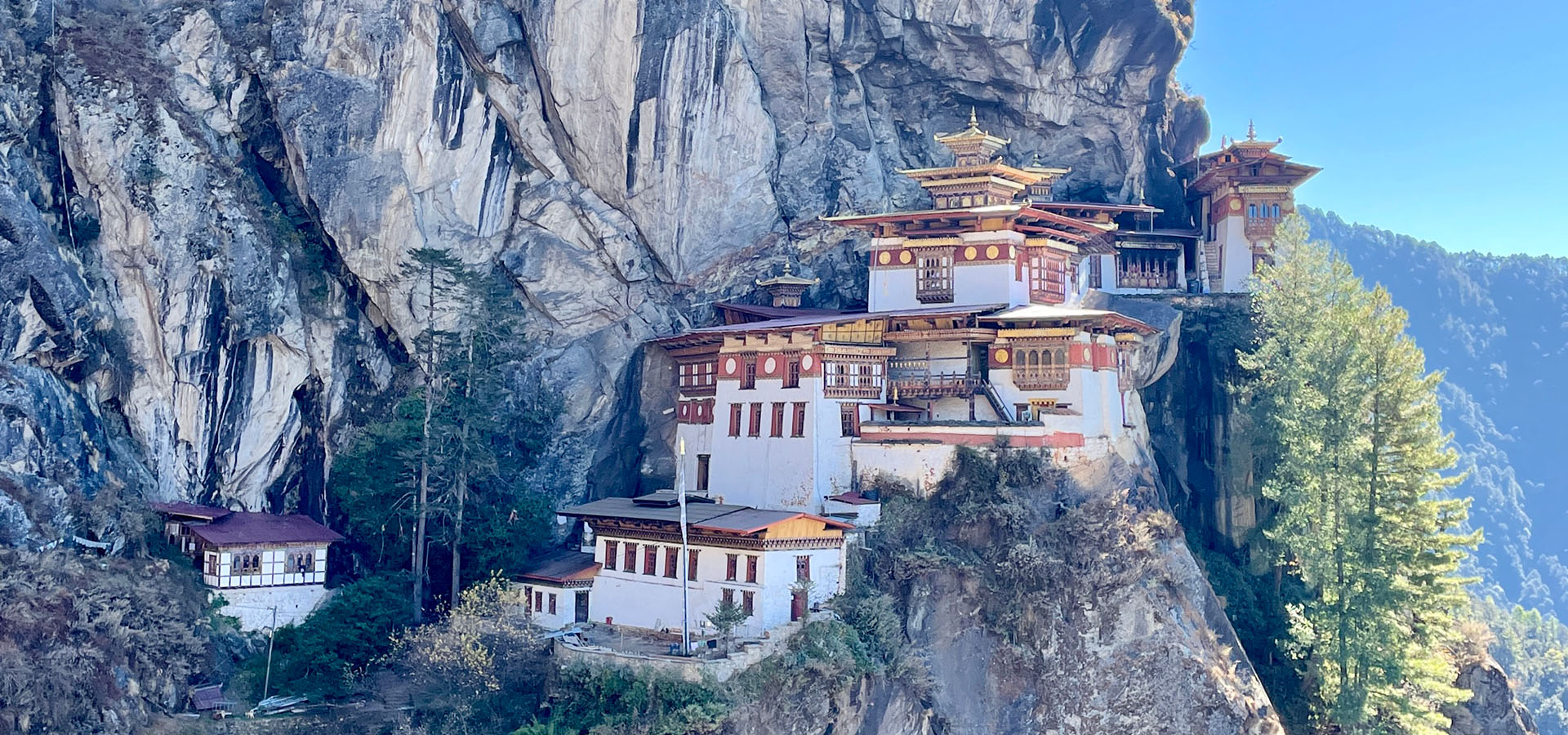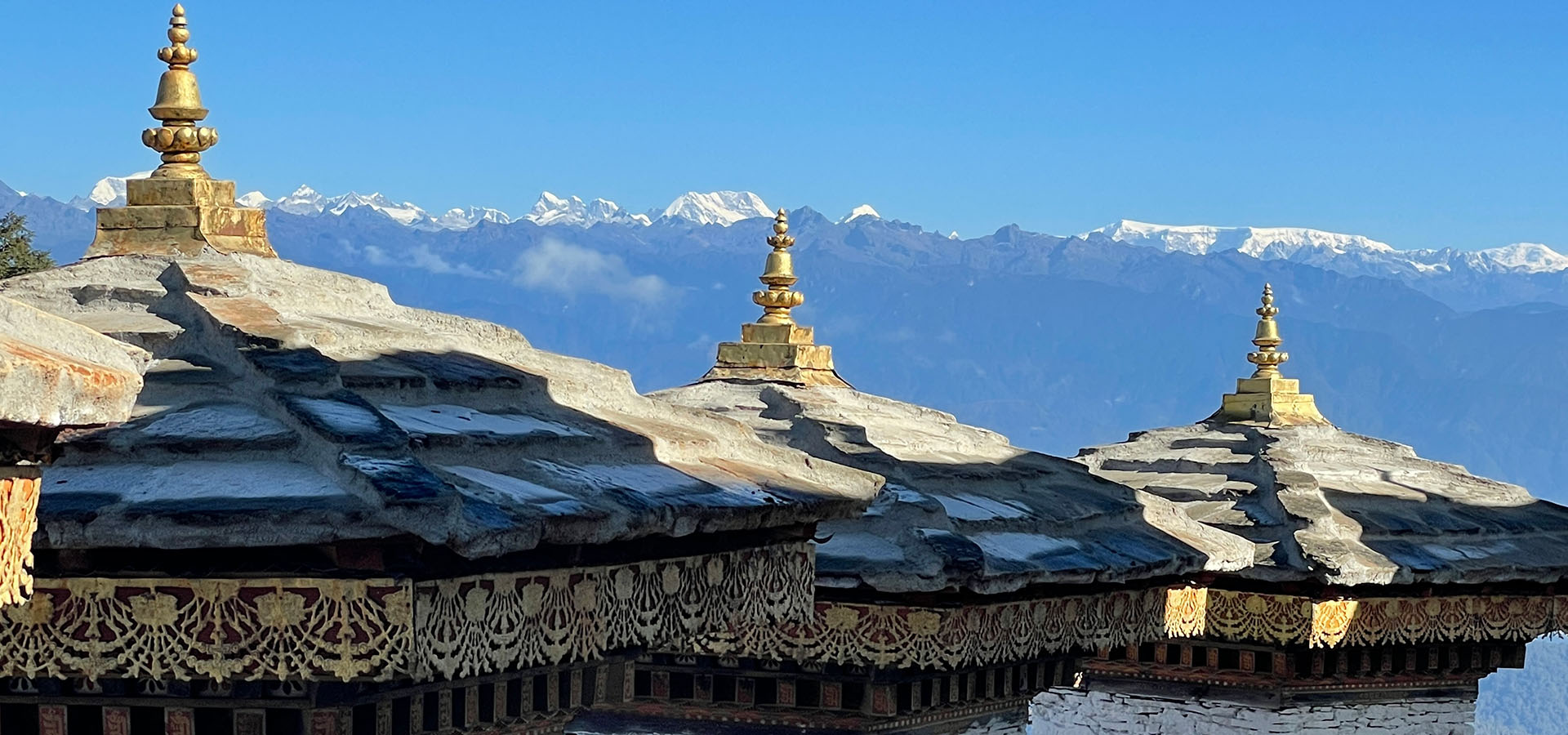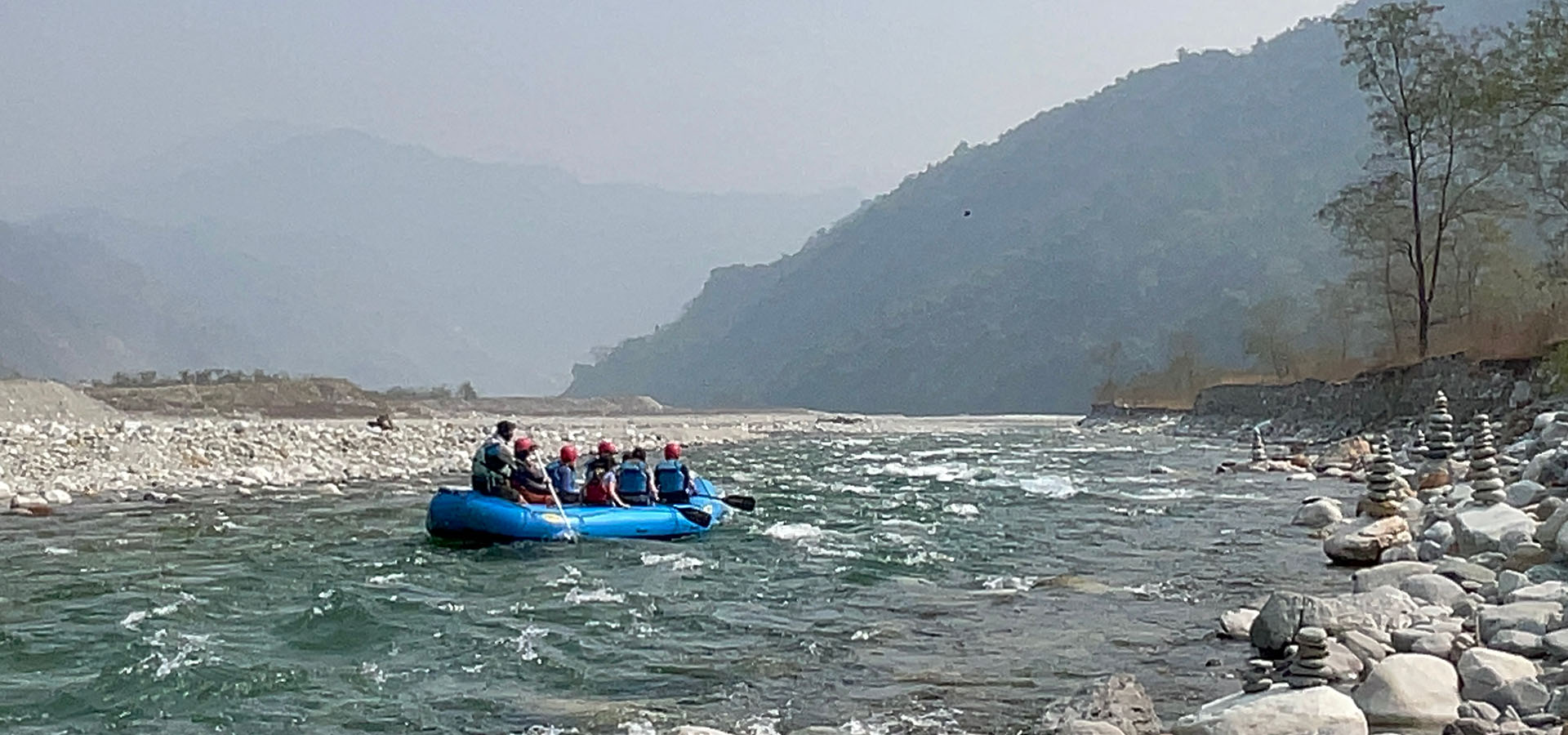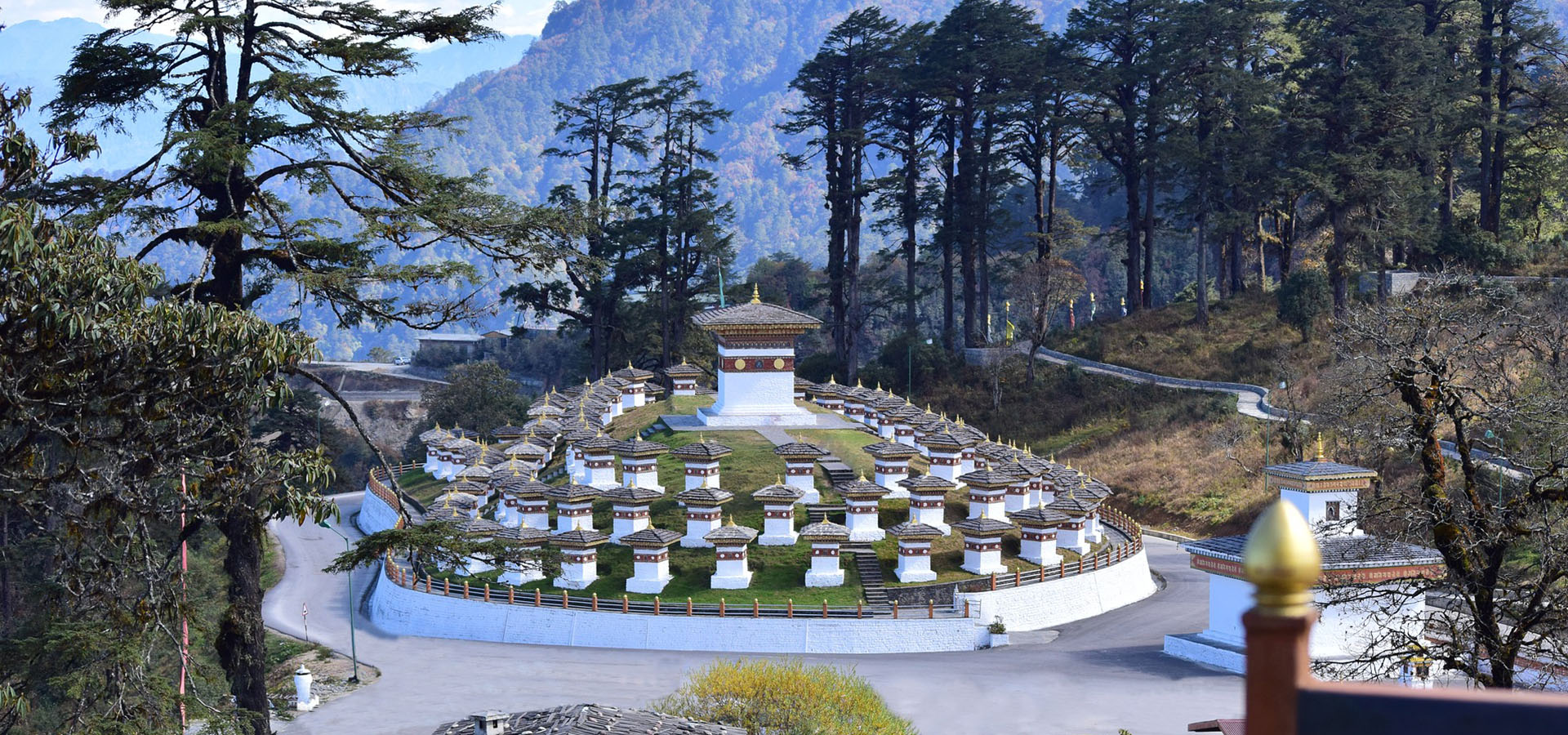Bhutan
Introduction and History
Bhutan, འབྲུག་ཡུལ་།, is a small kingdom situated east of Nepal between the countries of India and China. Its name means “Land of the Thunder Dragon.” It is a constitutional monarchy and ascribes to Vajrayana Buddhism as the state religion. It is a subalpine, mountainous region in the north with some peaks in the Bhutanese Himalayas rising more than 23,000ft (7000m) in elevation. Gangkhar Puensum is Bhutan’s highest peak (24,836ft/7,570m) and is the highest unclimbed peak in the world. The southern part of the country is subtropical.
The history of Bhutan is complex and somewhat unknown. Most records were destroyed in a fire that raged through the ancient capital of Punakha 1827. Tibetan Buddhism spread to Bhutan under the reign of Songtsen Gampo in the 600s. Songsten Gampo is the most famous of all the Tibetan kings and led the broadest, most unified Tibetan kingdom in all the region’s history. Bhutan was incorporated into the Tibetan kingdom during his reign. But it is Ngawang Namgyal, a Tibetan lama and military leader who fled to Bhutan in the 17th Century, who is most notable for what Bhutan has become today, an independent kingdom that still holds to its Tibetan Buddhist heritage and customs.
Key Cultural Sites and Observances in Bhutan
Ngawang Namgyal established many fortresses throughout the kingdom to protect the nation from neighboring countries. These fortress palaces, known as a dzong in Bhutanese, are the dominant cultural and political sites throughout the country. In fact, the national language is referred to as DzongKha, or the language of the palace.
There are several main observances or holidays throughout the year. Losar, or new year, is the biggest. Cham dances are notable performances during the Losar celebrations. Additionally, there are celebrations to mark the official end of monsoon season, the King’s birthday and coronation, significant religious dates, and National Day.
Adventure Opportunities in Bhutan
Bhutan is an adventure to most because of its exclusive nature. Few people make the journey to Bhutan. With an unwavering focus on the environment by the government in Bhutan, there are so many natural settings to enjoy the great outdoors. Day hikes, mountain biking, white water rafting, and fly fishing are among the day activities available. Longer cycling routes and epic treks such as the Trans-Bhutan Trail and the Snowman Trek afford the most adventurous with days of weeks of immersion into this tiny Himalayan Kingdom.
Best Time of Year to Visit Bhutan
Bhutan is a year round destination. Each season has unique characteristics. Spring and Summer are a delight for those wishing to enjoy the flora and fauna of the region. Fall is harvest season and the country glows with golden hues. Winter offers the clearest views of the Himalayas. Our main tour season mirrors that of Nepal, with Spring and Fall being the best options for most.


